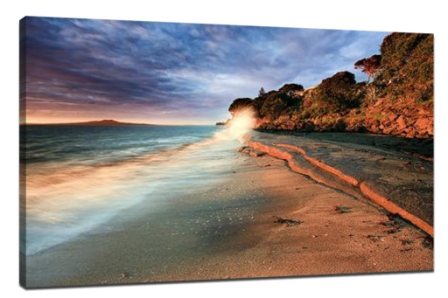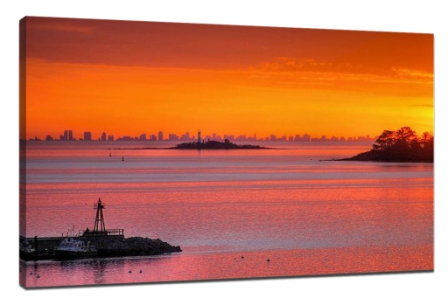Practical guide for travel photography
Practical guide for travel photography
Sunshine, summer, vacation... Some people will be quiet at home. But for photographers, it's a good time to go out for photography. Every day, the photographer will shoot from morning to night, people and buildings, pure ironman triathlon. But how do you get a satisfactory result in all three? The purpose of our practical guide is to provide you with some tips that you need to know.
We divided this practical guide into three parts. According to the different requirements of each part, we made specific suggestions on photographic equipment. The reason for doing this is supposed to be well-intentioned to warn you that every time you go out to shoot, you actually have to be very careful about getting ready for the trip. Whether you are photographing landscapes, people or buildings, you must use live light to compose your pictures while you are outside. There is no requirement, and it is impossible to take all your equipment with you every time. Select a few necessary accessories, such as flash and film.
The primary purpose of the landscape is to show the change of space through film. There are many similarities between tourist scenery photography and figure skating. Figure skating has the regulation action. The tourist scenery photography has not to take the typical scenic spot. The purpose of this requirement is to show the salient features of geographical region in the same series of photographs. You can't think that everyone in this place can't make their own feelings. Figure skating has its own motion, and the choice of travel scenery photography is your free shooting space.
A satisfactory picture is the result of three shooting conditions: First, in a more interesting place; Second, there should be more satisfactory light; Third, to find a more satisfactory shooting point. If one of the three is not satisfied, your travel landscape photography can be called a failure, and the photo can only be a tourist family memorial. That's why it's important to try to be the most distinctive, and either dawn or dusk. Naturally, traditional team tourism is not satisfied with this point. People who love the scenery photography can go to bed at noon because they get up early in the morning. The midday light was the worst. However, do not ignore cloudy or rainy days, because often in such weather, scenic spots often have unexpected and wonderful scenes.

A more satisfying light is not a guarantee of a successful photograph. The hard part is just beginning. How to use this more satisfactory light, in a very small picture [film] the space perspective of the scenic spot is the key to distinguish a successful image. That's why it's often disappointing to see the photos. Looking at the picture of the magnificent, spectacular Niagara Falls, I asked myself: is this the waterfall I see?
Like painting, opinion is the key. How to show the beauty of three-dimensional space in a double dimensional space, this is essential for landscape photography. The main problem for photographers is the depth of space through visual methods and photographic tools.
If the landscape does not have something that can be used as a scale, such as a branch in the picture, we will figure out a way to add a foreground to the landscape. The usefulness of the foreground is several points: first, give the picture a depth of performance, so that the vision will be guided by the foreground to the main shooting objects; Secondly, the foreground can be used to enclose the scene in a double dimension and fill the picture. Finally, the foreground can be woven into a contrast (color or light contrast). The scene requires the photographer to recombine and adjust the space. The process is the photographer's signature on the spot. The photographer should come up with a sequence, a balance, from the cluttered environment around the site. If that's not the case, the picture is a miserable record of reality.
From a technical point of view, we should use the camera's depth prediction to the maximum extent. The depth of field prediction is still the simplest, direct observation from the foreground to the background clear area of the means. However, when the aperture is minimized, this sharp area can only guarantee a certain range. It's time to change your mind. Because in addition to the quality of your lens, a picture that is almost clear from the foreground to the background is the most boring and does not represent your creation at all. On the contrary, if there is ever a part of the very clear sight blurred the prospect of foil, others can like or don't like it, but at least in this photograph, you have left their signatures, is their own ideas. This is why it is important to control clear areas in landscape photography.
In the light of exposure, the sky is often the factor that creates the problem. If the sky is too bright, is impossible that the sky is larger than the ground. If the light is more than three or four, you have to choose between a bright sky and an accurate exposure, or an accurate exposure of the sky and a lack of surface exposure. In black and white photography, this can be compensated for by darkroom magnification. But if it's color, the easiest way to do it is to use a gradient filter. The modern single-lens reflex camera can fully expose the gradient grey filter. Be sure to pay attention to the position of the gradient gray line when using the gradient grey filter. If your SLR camera allows you, you may be advised to change your viewfinder to a different style. With it, you cannot only guarantee the balance of the horizon, but also control the proportions of the various components in the image (don't forget about a third of the composition!). . The pursuit of perfection will also use a tripod. But it's better to use what you have on hand, such as the top of a car that has stalled.

Be sure to avoid:
Avoid empty skies. There is a saying to remember, "the clearer the sky, the more insipid the picture." Clear, empty sky makes the unique atmosphere of scenic spots disappear.
Don't rely on "landscape mode" or "automatic exposure mode". Aperture priority is the best mode of landscape design, because it allows you to control the size of a clear area. The photographer of the scene should use the aperture to control the depth of field.
Recent Posts
-
What is rolled canvas prints
In the realm of interior decor and artistic expression, canvas prints have emerged as a popular medi …10th Apr 2024 -
The benefits of printing family photos on canvas
In an age dominated by digital screens and fleeting images, the value of printed photographs cannot …7th Apr 2024 -
The best ways to use canvas prints for home decor
In recent years, canvas prints have emerged as a popular choice for home decor, adding style, person …3rd Apr 2024